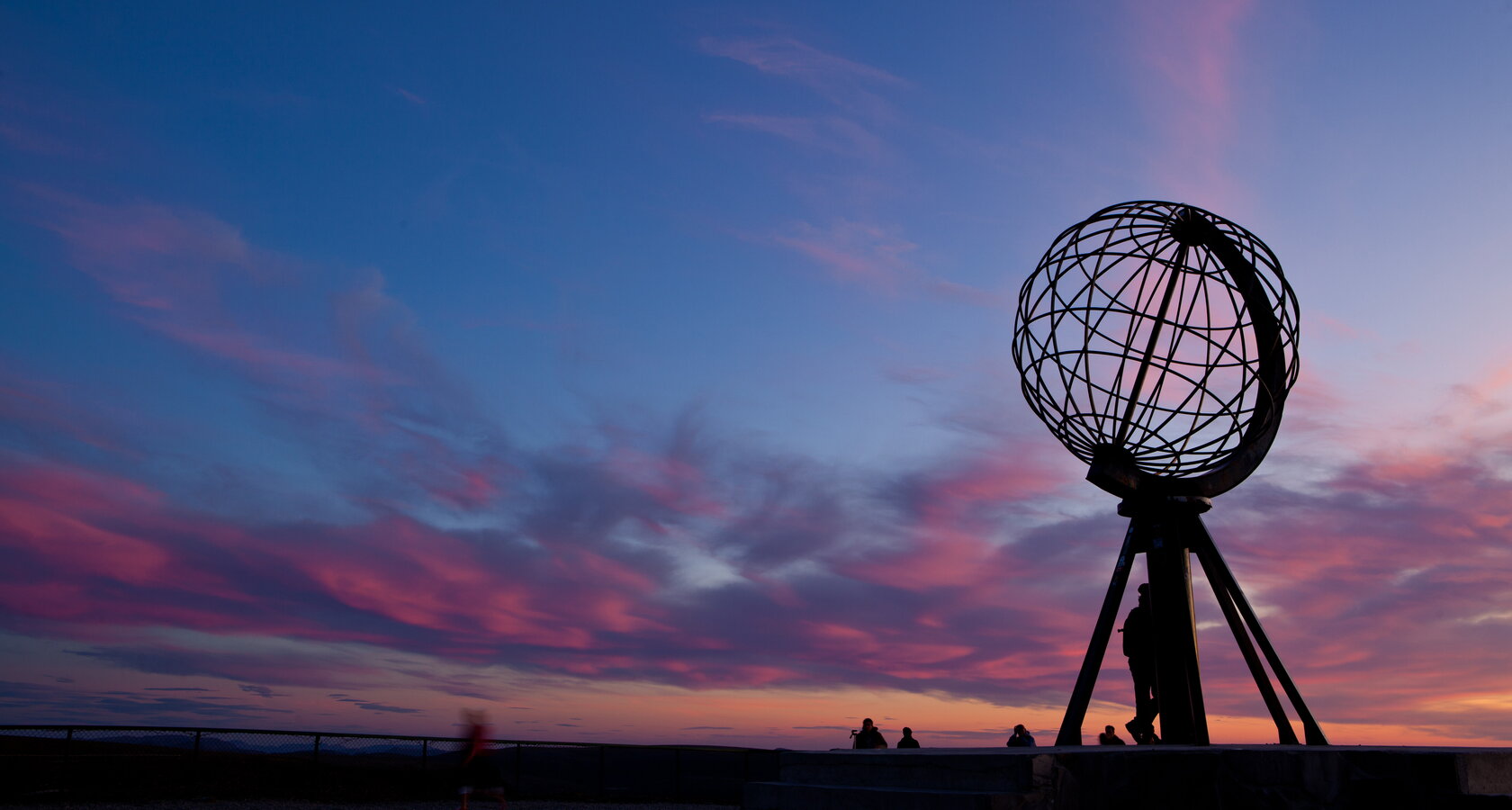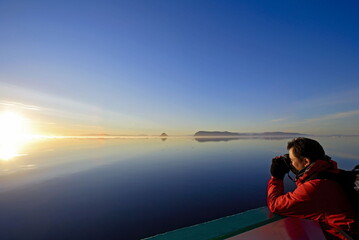
The new artic strategy
Europe what has changed?
Energy, critical minerals, and Arctic corridors are all part of a more comprehensive European strategy aimed at reducing strategic dependencies on China and Russia. Growing international tensions now call on the EU to play a more active role in the security dimension
13 minT
he Arctic has long been a region of strategic and cultural importance to European nations. The daring exploits of Norwegian explorer Roald Amundsen and Italian engineer Umberto Nobile in the airship Norge during the 1920s remain legendary among the Arctic’s communities. This era marked a time when Europe was the primary point of reference for the region’s inhabitants. Italy, in particular, has played a significant role in this history and continues to do so today. Since 1997, the Dirigibile Italia Arctic Station—named in honor of Nobile’s second expedition to the North Pole—has operated in Ny-Ålesund, Svalbard. However, Europe’s current position in the Arctic is far more complex, shaped by shifting global dynamics. The region now finds itself at the crossroads of competing interests: China’s investments under its Polar Silk Road initiative, Russia’s dual-use infrastructure projects blending civilian and military aims, and even recent geopolitical moves like the Trump administration’s controversial claims over Greenland.
The EU in the Arctic in a changed global context
Europe and the EU have a strong strategic interest in the Arctic. Five of the eight member states of the Arctic Council—the international forum for cooperation on environmental protection, resource management, and scientific research—are European, and three (Finland, Sweden, and Denmark) are EU members. The war in Ukraine marked a turning point. Since its outbreak, the Arctic has shifted from a zone of collaboration to one of confrontation, with relations between Russia and the other Arctic Council members frozen. As a result, the Council’s activities have largely stalled, continuing only in a limited capacity on certain technical and scientific matters. Similarly, EU-Russia cooperation has been suspended in several regional initiatives, including the Northern Dimension policy, the Barents Euro-Arctic cooperation, and the Council of Baltic Sea States. This effectively ends the notion of Arctic exceptionalism—the idea that the region was uniquely insulated from geopolitical conflict through cooperative governance.
Although the EU holds only an ad hoc observer status in the Arctic Council—unlike countries such as Italy, China, India, and Japan, which are full observers—it still wields considerable influence. Through the European Economic Area (EEA), the EU extends the benefits and regulations of its Single Market to associated EFTA countries, including Norway and Iceland, thereby impacting Arctic governance. Consequently, EEA member states must adopt EU regulations relating to energy and environmental policies. The EU also supports Arctic development through cohesion policies for the Arctic regions of Denmark, Finland, and Sweden, as well as via the European Regional Development Fund (INTERREG), which promotes cooperation among EU regions. The EU’s primary instrument for strengthening its role in the Arctic is its 2021 strategy for a safe, stable, sustainable, peaceful, and prosperous region. However, given the rapidly evolving geopolitical landscape, this strategy is already in need of revision. Nonetheless, its three core pillars remain relevant and interconnected: (1) climate change, with Arctic temperatures rising at least twice as fast as the global average; (2) the increased accessibility of hydrocarbon and critical mineral resources due to warming; and (3) the potential for new trade routes emerging as Arctic ice recedes.
While the EU seeks to diversify Asia-Europe transit options, forging a structural agreement with China on the NSR is complicated by Beijing’s growing strategic alignment with Moscow
In this context, climate change could significantly reshape Arctic geopolitics by enhancing maritime connectivity. The Northern Sea Route (NSR), which links the Atlantic and Pacific by skirting Scandinavia and Russia, is particularly noteworthy. China launched its first Asia-Europe container service along this route in 2023, with the number of completed trips steadily increasing. However, Europe’s role in the NSR remains complicated. While the route offers significant reductions in both travel distance (6,400 km shorter than the Shanghai-Rotterdam route via Suez) and transit time (cutting voyages from 48 to 35 days), it also falls largely within Russia’s exclusive economic zone (EEZ). Moscow claims the authority to regulate transit, issue permits, and levy fees on ships using these waters. Meanwhile, Russia is reactivating Soviet-era military bases and expanding dual-use infrastructure along its Arctic coast, partly in response to NATO’s enlargement to include Sweden and Finland. Greater European cooperation with China on Arctic trade routes is also challenging. While the EU seeks to diversify Asia-Europe transit options, forging a structural agreement with China on the NSR is complicated by Beijing’s growing strategic alignment with Moscow. In March 2023, China and Russia formalized their cooperation on the NSR by establishing a joint working group to invest in shared logistics and energy infrastructure.
The Geological Survey of Denmark and Greenland (GEUS) reports that Greenland holds 25 of the 34 minerals classified as critical by the EU, including rare earth elements, extensive graphite deposits, and multiple lithium reserves
At the same time, the EU’s Arctic strategy incorporates the development of regional transport hubs. Ports such as Luleå (Sweden), Kemi and Oulu (Finland), and Narvik and Hammerfest (Norway) are now part of the EU’s Trans-European Transport Network (TEN-T), specifically the Scandinavian-Mediterranean corridor. Strengthening these ports and rail links will be key to integrating Arctic trade flows with Europe’s transport infrastructure, potentially including future shipments via the NSR. Connectivity also extends to digital infrastructure and undersea cables. Existing connections include the FARICE-1 and DANICE cables, which link Europe to Iceland and, via the Greenland Connect cable, to Greenland and Canada. A key project in this evolving landscape is the Far North Fiber initiative, which aims to connect Europe and Japan through the Arctic, bypassing the bottlenecks of the South China Sea and the Red Sea. This route would enhance communication security and increase redundancy for digital connections between Europe and Asia. The project also aligns with the European Commission’s recent action plan on submarine cable safety, which emphasizes improved prevention, rapid response to incidents, and deterrence—measures that are particularly relevant in the Arctic region. The EU is also active in the Arctic through its space infrastructure, particularly the Copernicus satellite program, which supports Arctic observation and climate change monitoring. This effort benefits from contributions such as Italy’s COSMO-SkyMed program and the upcoming IRIDE initiative. Additionally, the EU aims to enhance regional connectivity through the IRIS² satellite program, which is designed to provide reliable internet access in remote areas, including the Arctic.
Climate change has intensified competition for Arctic resources. While the Trump Administration’s renewed interest in acquiring Greenland was primarily framed as a national security issue, economic factors also played a role. The Arctic is estimated to contain 13 percent of the world’s undiscovered oil reserves and 30 percent of its undiscovered gas reserves. However, the primary focus today is on critical minerals, which are essential for the energy transition. According to Benchmark Minerals Intelligence, 43 of the 50 minerals deemed critical to U.S. national security are found in Greenland. The island is equally significant for Europe. The Geological Survey of Denmark and Greenland (GEUS) reports that Greenland holds 25 of the 34 minerals classified as critical by the EU, including rare earth elements, extensive graphite deposits, and multiple lithium reserves. Recognizing the strategic importance of these resources, the EU and Greenland signed a Memorandum of Understanding in November 2023 under the European Critical Raw Materials Act to integrate their critical minerals supply chains. The two also collaborate through the Minerals Security Partnership, which includes the U.S. The EU has signed similar critical minerals agreements with Canada and Norway.
Greenland: what role for the EU?
Greenland is now at the center of Arctic geopolitical interests. Denmark has asserted its sovereignty over the island since 1776, formally recognizing it as a county of the Kingdom of Denmark in 1953. In the 1972 referendum on joining the European Economic Community (EEC, now the EU), Greenland voted against membership but was bound by Denmark’s overall decision to join. A major step toward autonomy came with the Home Rule Act of 1979, followed by Greenland’s decision to leave the EEC in 1985. Greenland’s self-governance was further expanded in 2009, and in 2010, it gained control over its mineral resources. However, Denmark retains authority over defense and security. In January 2025, the Danish government announced a €1.96 billion plan to strengthen Arctic defense and security. Greenland is classified as one of the EU’s Overseas Countries and Territories (OCTs), meaning it is not part of the EU or the Single Market but remains associated with the bloc through Denmark. Although Greenland is no longer an EU member, its residents, as Danish citizens, retain EU citizenship. The island maintains strong economic ties with Europe, with more than 88 percent of its trade flowing to and from the EU.
U
nder the EU’s 2021-2027 multi-year budget, Greenland receives €225 million—more than the combined allocation for all other OCTs. The EU also provides financial support for Greenland’s fishing industry and pays for access to its exclusive economic zone, allocating €3.2 million and €14.1 million, respectively, for 2025-2030. As an OCT, Greenland benefits from EU funding programs such as InvestEU, NDICI (with EIB support), Horizon Europe, LIFE, and Erasmus+. It also participates in the Northern Periphery and Arctic Program and the Connecting Europe Facility. Additionally, Greenland can access funding under the EU’s Global Gateway initiative, launched in 2021. This dense network of economic and strategic ties was further reinforced in March 2024 with the opening of a European Commission office in Nuuk. However, Greenland’s political trajectory remains uncertain. The March 11 elections could mark a turning point, as center-right parties—many of which favor nationalism and independence—seek to redefine the island’s future relationship with Europe.
Energy, critical minerals, and Arctic trade routes are key components of a broader European strategy aimed at diversification and reducing strategic dependencies, particularly on China and Russia. The Arctic region itself could play a crucial role in achieving this goal. Rising international tensions now require European countries and the EU to take a more active role in security, including efforts to lessen their historical reliance on the U.S. To remain a credible player in the Arctic, the EU must complement its economic influence with deterrence capabilities that can safeguard its interests and critical infrastructure. Only by balancing economic strategy with security measures can Europe effectively assert itself in the region.

